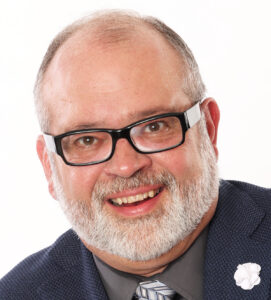
[PODCAST] The Importance of Knowing Your Team
April 19, 2024Fundraising Across The Big Pond
April 23, 2024Is Strategic Planning a Nonprofit Consulting Scam?

Is Strategic Planning a Nonprofit Consulting Scam is one truth-teller’s take on why charity is in a perpetual state of mediocrity. Here’s what Jimmy LaRose has to share about charitable executives, board members, consultants and their failed attempt at strategic planning:
How do I know Strategic Planning is a Nonprofit Consulting Scam? Because I used to do it! I promise you, I was sincere when I first led charities through this process but after 10 years of facilitating planning sessions I was faced with a hard truth. I WAS CHARGING NONPROFITS A HEFTY SUM FOR A PRODUCT THAT DIDN’T WORK.
Tragically, not only was I selling strategic planning but was also guilty of hocking feasibility studies, board fundraising training, etc. In case you didn’t know, it’s articles like this one that turned me into an industry pariah. The ivory-tower elites, who make their money selling products to unsuspecting nonprofits, don’t want you to know about these scams. They’re terrified that you may have a separate or critical thought about the way things work or discover the dark underbelly of nonprofit mismanagement.
How do I know strategic planning is a nonprofit consulting scam? Because I used to do it!
Regardless, we have nothing to worry about. Why? BECAUSE TRUTH NEVER FEARS A CHALLENGE.
Traditional nonprofit strategic planning involves bringing in a consultant who facilitates a one or two-day board retreat away from the office. The atmosphere is typically more relaxed than a regular board or staff meeting. This outside third-party leads the group through a visioning exercise or a SWOT analysis hoping that a three to five-year plan emerges that contains their input. Board members are asked to design a plan so that staff achieve goals set by the board. An action plan and budget may or may not emerge. The executive director takes the plan, presents it to staff for deployment. The executive director and staff attempt to follow the plan until the day-to-day management fires catch up with them. At which point, the strategic plan is perceived as irrelevant to their actual everyday work. The plan goes up on a shelf. It is brought out maybe once a year to review, discuss, and possibly update. In three to five years, the whole process starts again.
Truth Never Fears a Challenge ~ Jimmy LaRose
Sadly, this botched approach is an industry norm…its failure is rooted in a reliance on a group of unfit unpaid volunteers we call board members. Why unfit? Too many boards of directors are comprise of members who have:
1. Limited experience in effective nonprofit management.
2. No experience with the client population served.
3. Little understanding of agency operations, or fundraising.
Sadly, this botched approach is an industry norm…its failure is rooted in a
reliance on a group of unfit unpaid volunteers we call board members.
Are we really going to rely on a board of directors to set goals and expectations for staff? How can they define operational goals without intimate knowledge of the inner workings of the organization? They can’t.
VISIT HERE TO READ JIMMY’S ARTICLE ON HOW GREAT NONPROFIT BOARDS TRULY OPERATE
Simply put, strategic planning is a consulting scam. It’s a high-priced panacea that allows a mediocre group of unqualified individuals to check a box! It doesn’t work or produce results. It hasn’t for decades. We know this because 80% of charitable organizations operate with budgets under $500,000. Furthermore, most nonprofits close their doors within five years. Finally, the charitable sector has a sixty-year history of deploying only 5 percent of gross domestic product to tackle the hardest problems facing humanity. What kind of success is that?
Simply put, strategic planning is a CONSULTING SCAM. It’s a high-priced panacea
that allows a mediocre group of unqualified individuals to check a box!
Organizational Development (OD) Is Different From Strategic Planning
OD is different. Here’s a few distinctions:
1. OD is CEO driven, not board driven.
2. OD defines missional success in an uncommon way.
3. OD prioritizes donors above program participants.
We’ve proven through clinical studies that the person who leads the organization, the one who deeply understands the community, has a command of operational processes, procedures, strengths, and weaknesses; and has the authority to involve and direct staff is the person who should be responsible for formulating institution-wide organizational development.
VISIT HERE TO READ JIMMY’S ARTICLE ON HOW GREAT NONPROFIT BOARDS TRULY OPERATE
We call this person THE STRONG CEO.
The strong CEO articulates the nonprofit’s vision and works with the staff to operationalize it. The board of directors does not determine vision. Rather, it is the board’s responsibility to approve THE STRONG CEOs vision and evaluate the CEO’s ability to accomplish it. Board members measure the CEO’s performance in two distinct areas of nonprofit management: FINANCE & IMPACT. Here’s the constant question, “Has the CEO generated revenues and used them to scale our nonprofit’s mission?”
Organizational development, when done correctly, is transformative. CEOs involve those who want to join them on a journey forward; bless and release those who don’t; tackle systemic obstacles to success; do not be afraid of conflict and effect transformation. You are doing more than just implementing a plan—you are changing your world and ours.
Great nonprofit boards install a STRONG CEO!
Great Nonprofit Boards Ensure an Organization Thrives:
We see the strong CEO as the only one qualified to lead organizational development. The key is hiring a strong CEO, one who has exemplary leadership capabilities and business acumen. The strong CEO should be an accomplished professional with a deep understanding of the population or cause the nonprofit serves.
The CEO sets the vision. The CEO works with staff to define work goals and implementation plans. In between board meetings the CEO relies on the board for ADVICE. During board meetings the CEO relies on the board for ACCOUNTABILITY!
(Regarding accountability, the strong CEO is allowed to fulfill his or her vision within the bounds of the nonprofit’s mission. He or she is independently evaluated on an annual basis on FINANCE AND IMPACT!)
Great boards hire strong CEOs, fire ineffective ones, and provide advice in their areas of expertise as needed. Board members take on an advisory role. They relax in the knowledge that they have hired well and are contributing to solving an issue about which they deeply care.
Great board members are validated for their strengths (not scolded for their weaknesses) and know that they’ve installed a spectacular Chief Executive Officer. They are experts with the following knowledge sets:
1. Business Expert (Chair) Entrepreneur
2. Program Expert (Secretary) Specific
3. Finance Expert (Treasurer) Accountant
4. Legal Expert (Member) Lawyer
5. Communications Expert (Member) PR/Marketer
6. Nonprofit Expert (Member) Consultant
Board meetings are fun. People are contributing in a meaningful way within their area of expertise. They are engaged. Less Board-CEO tension exists, which passes down to the staff, clients, and donors. Fundraising improves because a happy staff interacts with donors more positively than an unhappy staff. The result is a healthy work environment for everyone.
Strategic Planning is a Nonprofit Consulting Scam!
What is Organizational Development?
The key to growing your mission is rooted in your ability to deploy every resource needed to SOLVE a problem COMPLETELY. Eliminating a vexing humanitarian issue is only possible if you have the income required to scale your impact. Organizational Development (OD) CONSIDERS fundamental questions like?
-
- What are your desired outcomes? (solve a problem)
- How do you define success? (value proposition)
- How much time will it take? (3, 5, 7, 10 years)
- What are the associated costs? (comprehensive campaign dollar amount)
Organizational development ensures a Board, CEO and Staff
STOP SERVICING A PROBLEM and instead SOLVE A PROBLEM COMPLETELY!
There will always be generous people will amply support your great dream when it’s backed by a sound plan. OD is the process used to create your sound plan. It is a written, systematic, comprehensive work that determines how you spend your time and money. Organization development ANSWERS the following questions:
-
- Who do you serve? (population type)
- What are your desired program customer outcomes? (community impact)
- What is it that you do to effect change? How do we serve? (what are our programs and what is unique about them)
- What is the market for your services? How many are there to be served? (total market)
- How much of that market are you currently serving? How many do you serve? (your existing annual program participants)
- How much of that market are other organizations serving? (other agencies annual program participants)
- How much money would it take to apprise every person who needs services to hear about your organization? How much does it cost to inform every potential program prospect?
- How much money would it take to bring each of them to a yes/no decision about availing themselves of your services?
- Of the people who say yes, how much would it cost to serve them? How much does it cost to serve everyone who says YES? (Project Case $$$)
- How much money will it cost to evaluate your impact?
OD contains hundreds of details that will be more broadly represented within your Case for Support. Donors who ask to review your OD Plan are asking to see information that shows how you intend to spend their money (stewardship). They’re determining whether they will give a $500 donation or a $500,000 investment that saves and transforms lives. Organizational development done well will attract transformational gifts, express your heroic mission, and tell donors what it takes to address the problem your community is facing. IT CONFIRMS THAT YOU’RE THE EXPERT and will reveal to donors several different dollars amounts that, when raised, ensure you achieve significant impact.
VISIT HERE TO READ JIMMY’S ARTICLE ON HOW GREAT NONPROFIT BOARDS TRULY OPERATE
Donors Love Organizational Development When It’s Done Right
Organizational development is donor-centric. It meets the investor’s need to “give” rather than the nonprofit’s need to “get.” Organizational development, when done properly, will bring the focus and momentum necessary to move donors to invest in uncommon ways.
The purpose of an organizational development initiative is to determine the “as is” and define the “to be” not only in terms of programs and finances, but the whole culture of the organization. Every culture has strengths and weaknesses. Examining your agency’s culture helps you leverage your nonprofit’s strengths while, at the same time, reducing its weaknesses.
Organizational development is inextricably interwoven with fundraising. Fundraising does not happen in a vacuum. The success of your fundraising effort is directly linked to what you know about the organization’s culture and how clearly and objectively you see it.
If you are part of an organization, you probably do not see or value your agency’s customs and norms objectively. You abide by them, often unaware of them. If you are aware of them, you tend to accept them.
Using a third-party expert to support organizational development may work for you. Major Gifts Ramp-Up counselors are objective and see things from broad experiences within a variety of organizational cultures. MGRU Counselors often recommend interventions which are not immediately obvious to those inside the organization.
–END—
Strategic Planning is a Nonprofit Consulting Scam was first posted at INSIDE CHARITY
For more articles like Strategic Planning is a Nonprofit Consulting Scam VISIT HERE
About The Author:
 Jimmy LaRose has devoted his thirty-five year career to changing the way donors treat the charities in whom they invest. LaRose has raised hundreds of millions of dollars around the world for people in need. He is the co-founder of National Association of Nonprofit Organizations & Executives. His best-selling book RE-IMAGINING PHILANTHROPY has been named by BookAuthority as one of the 100 Best Philanthropy Books of All Time.
Jimmy LaRose has devoted his thirty-five year career to changing the way donors treat the charities in whom they invest. LaRose has raised hundreds of millions of dollars around the world for people in need. He is the co-founder of National Association of Nonprofit Organizations & Executives. His best-selling book RE-IMAGINING PHILANTHROPY has been named by BookAuthority as one of the 100 Best Philanthropy Books of All Time.
NANOE
712 H Street NE Suite 1149
Washington, DC 20002
(800) 257-6670
[email protected]
www.NANOE.org
